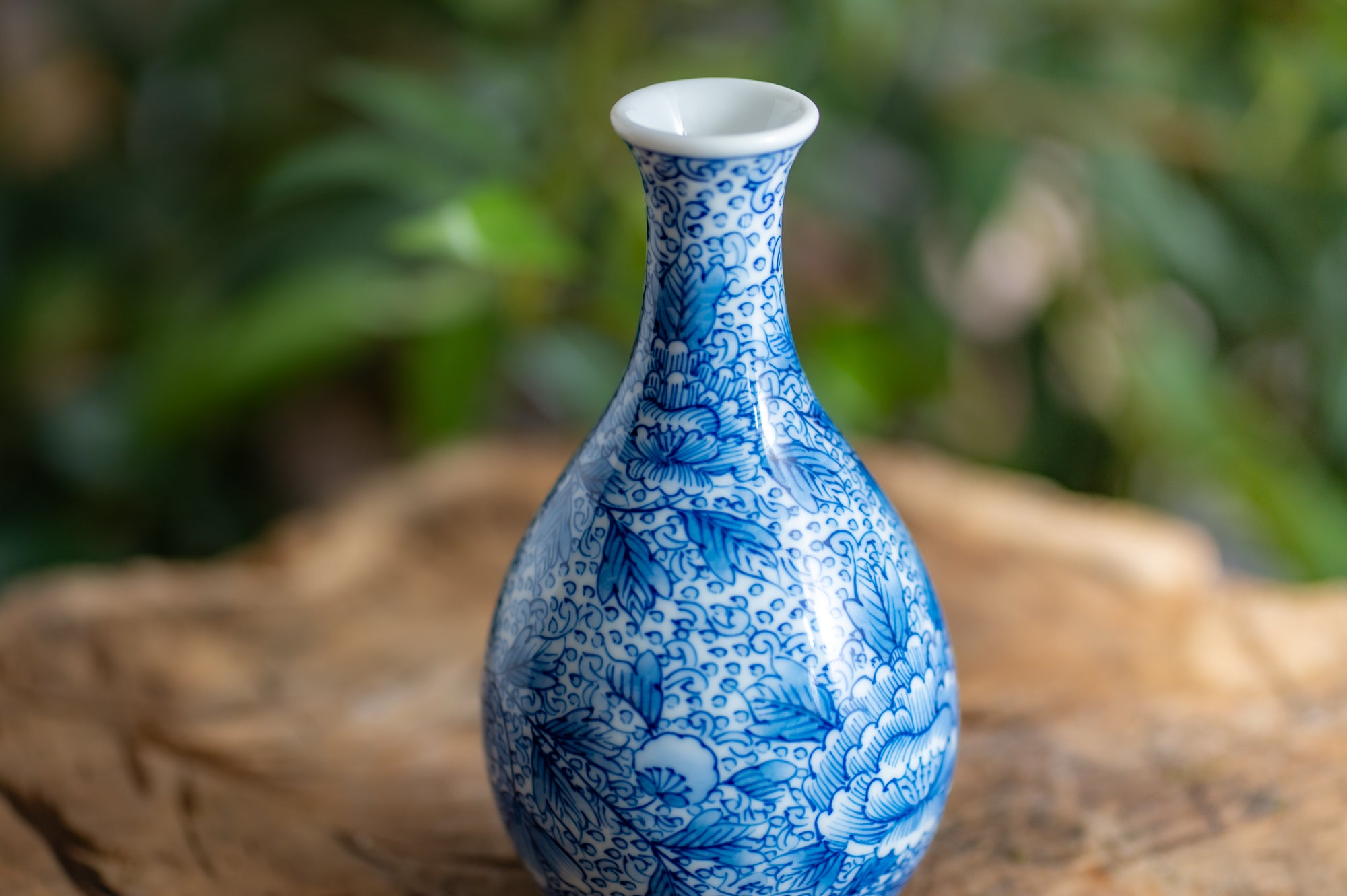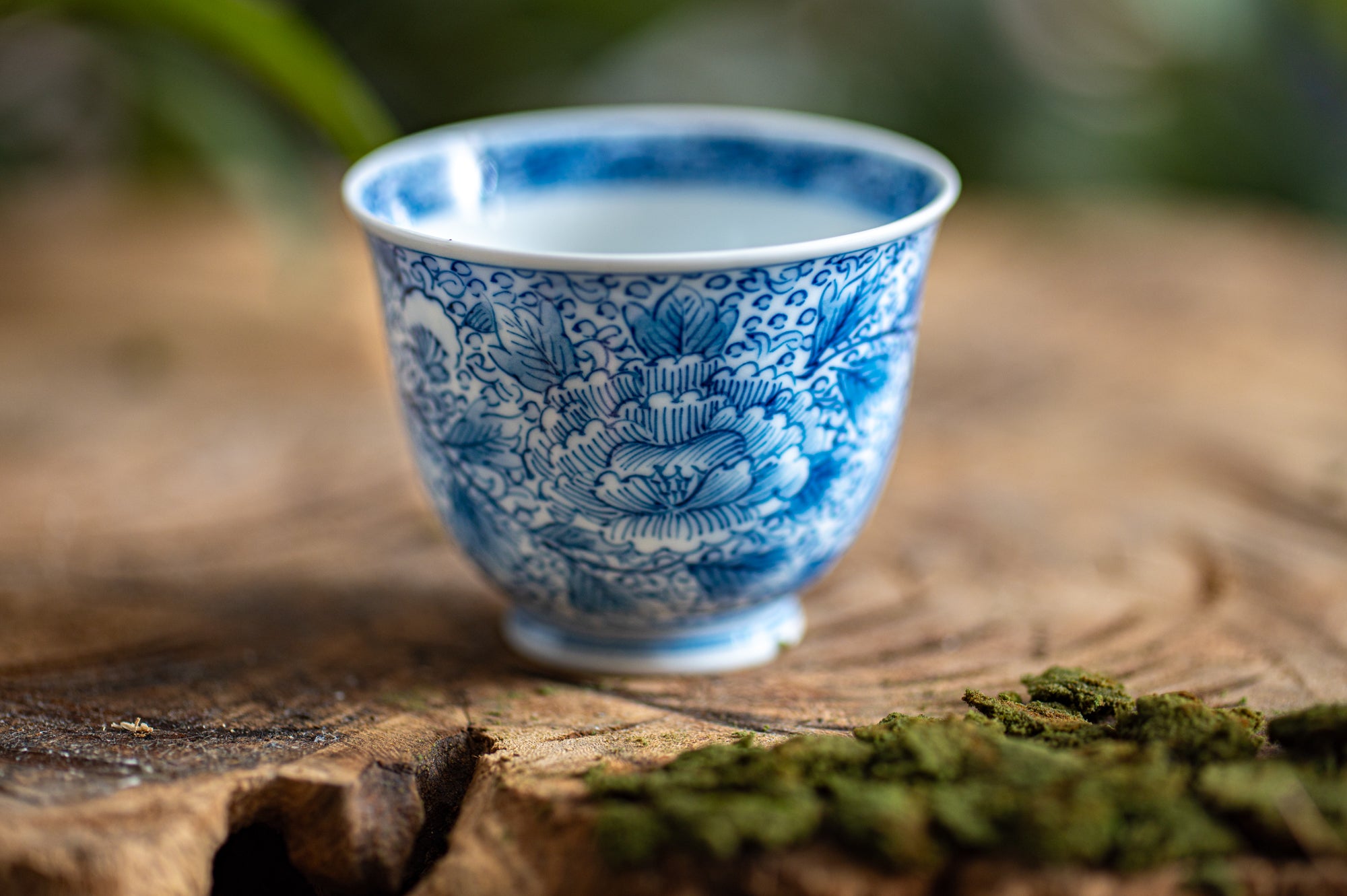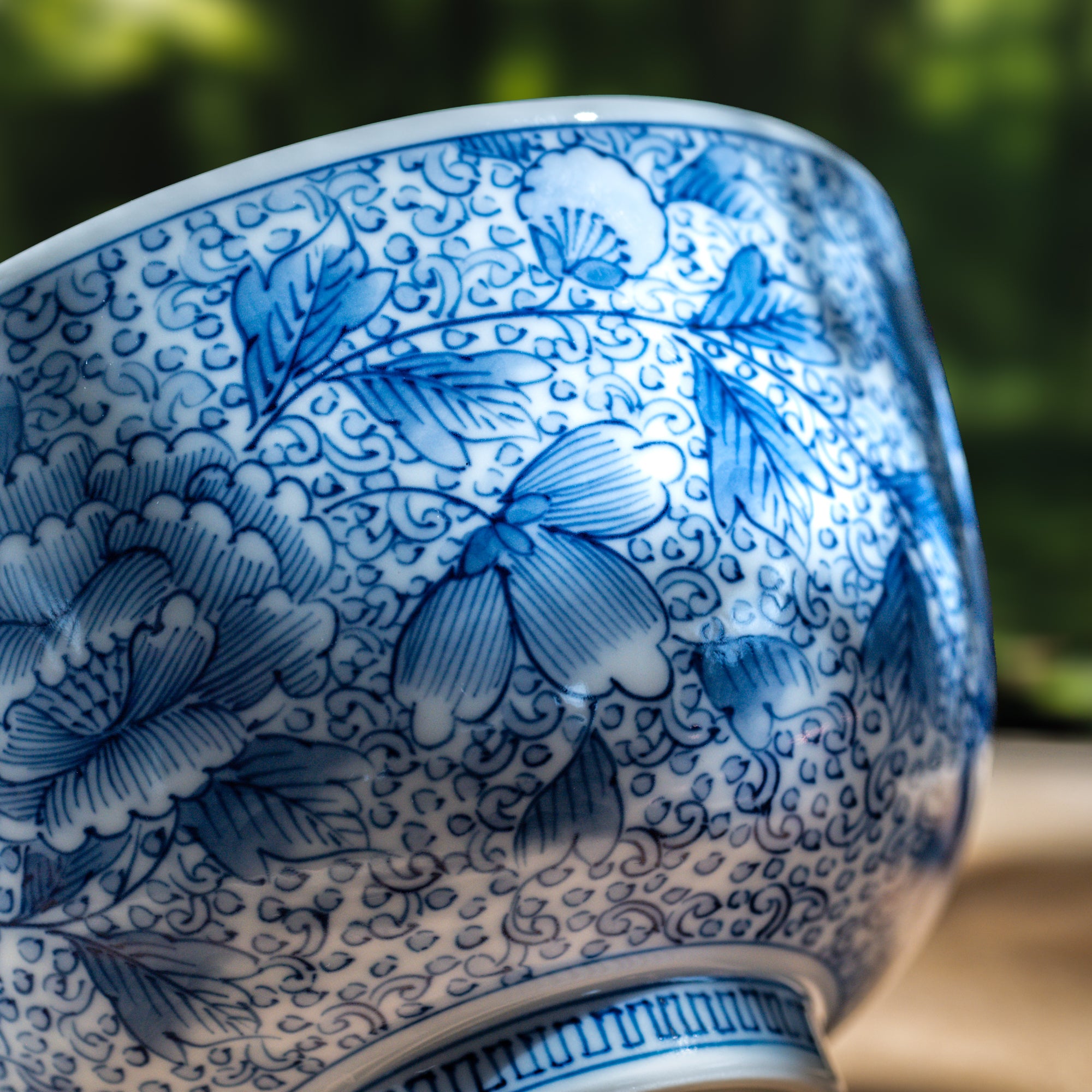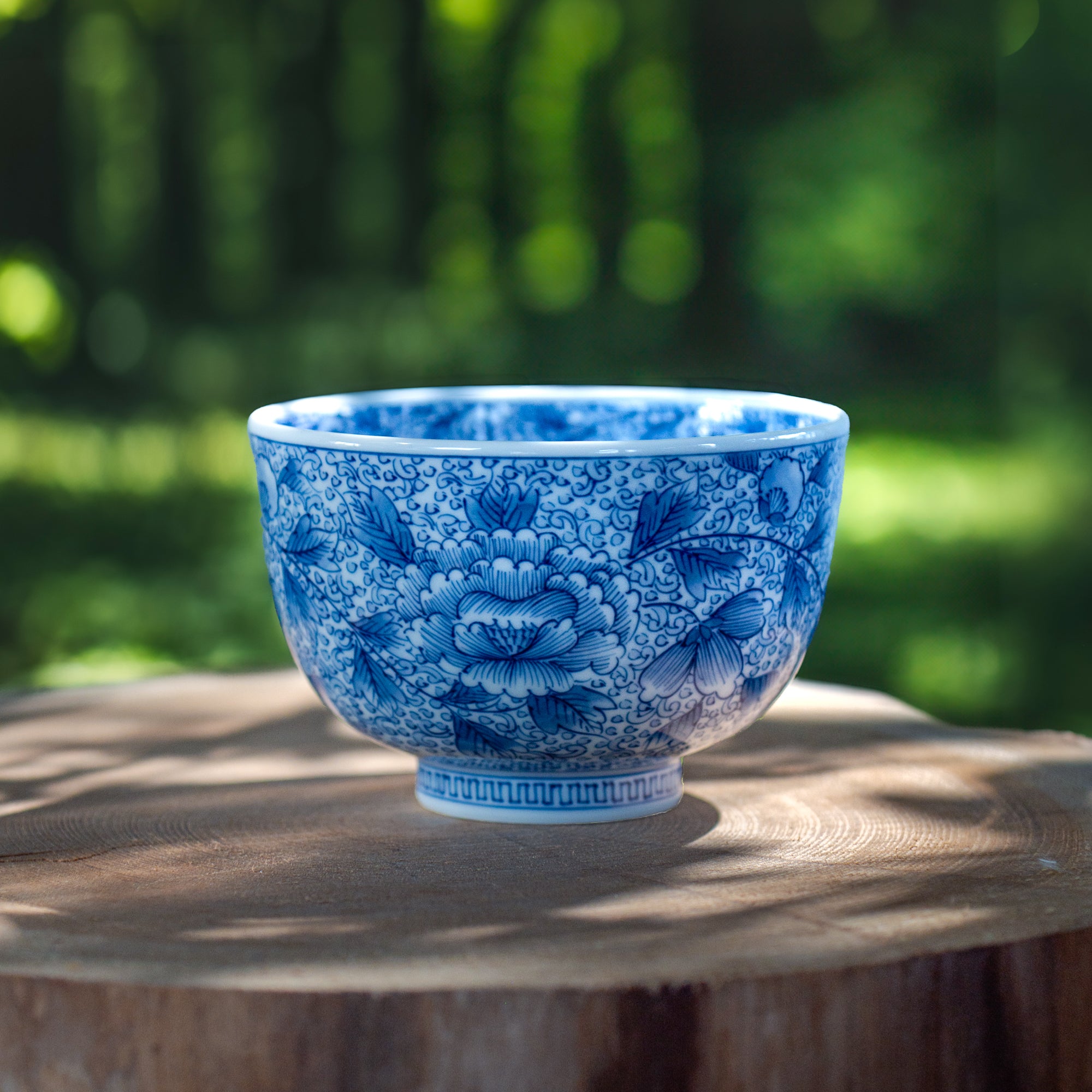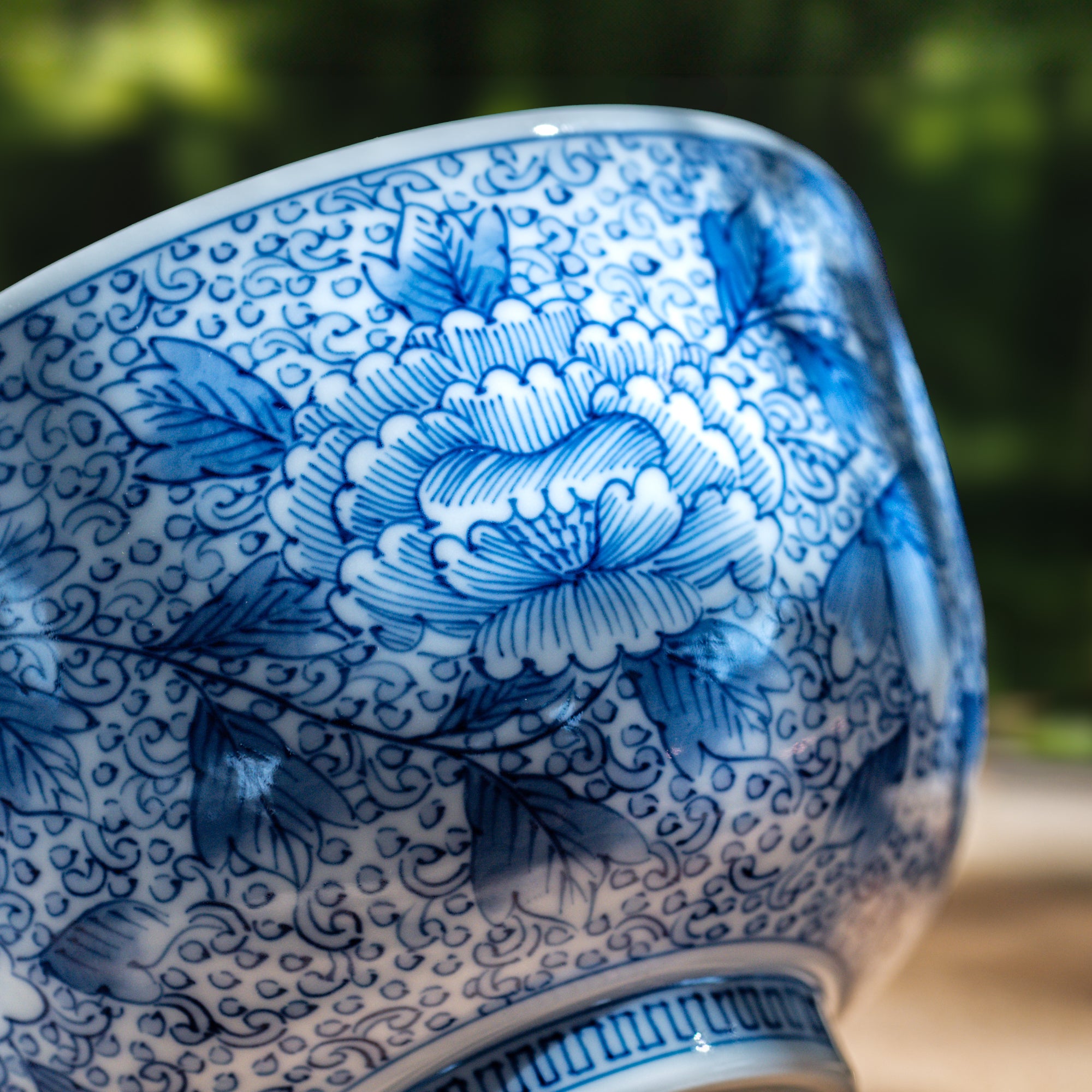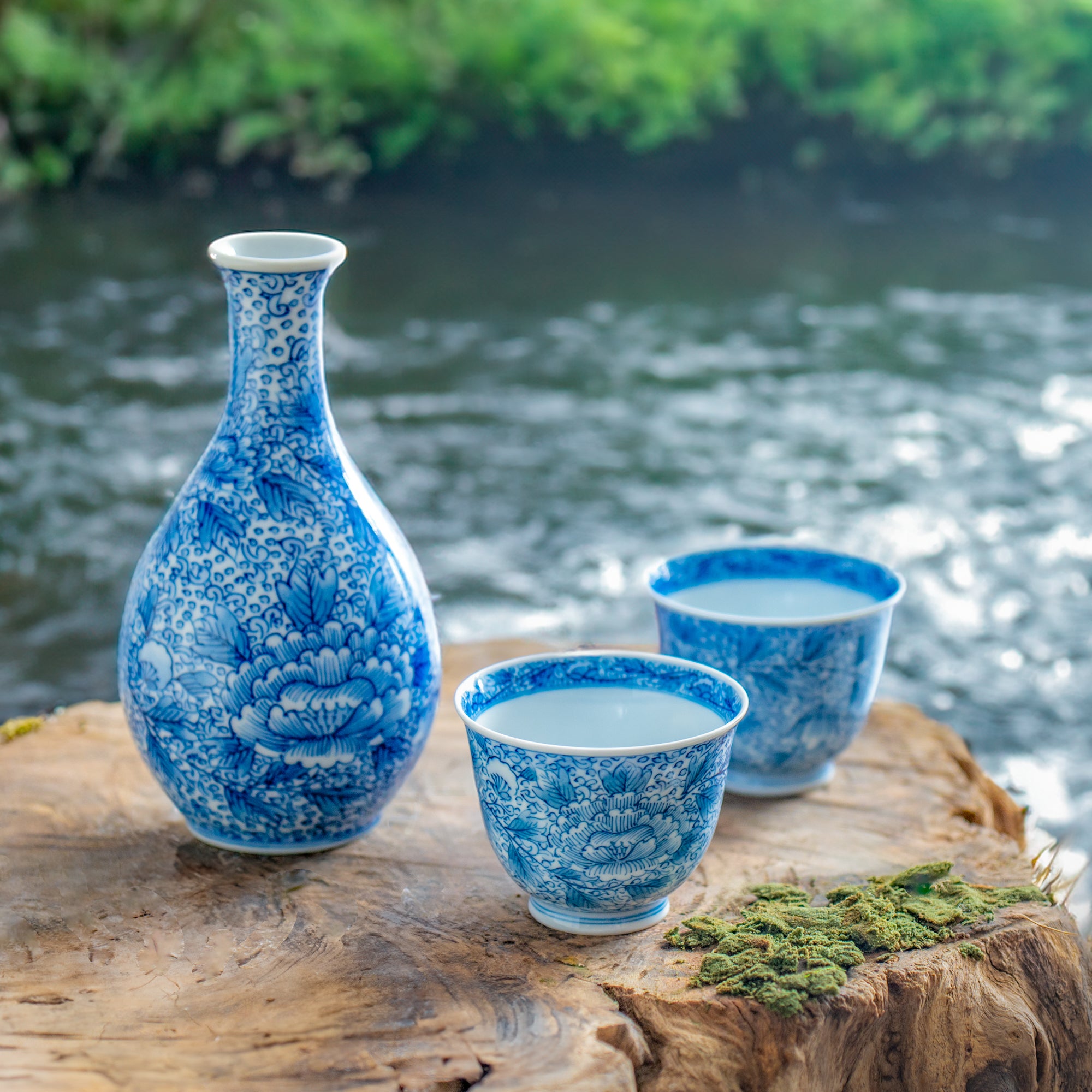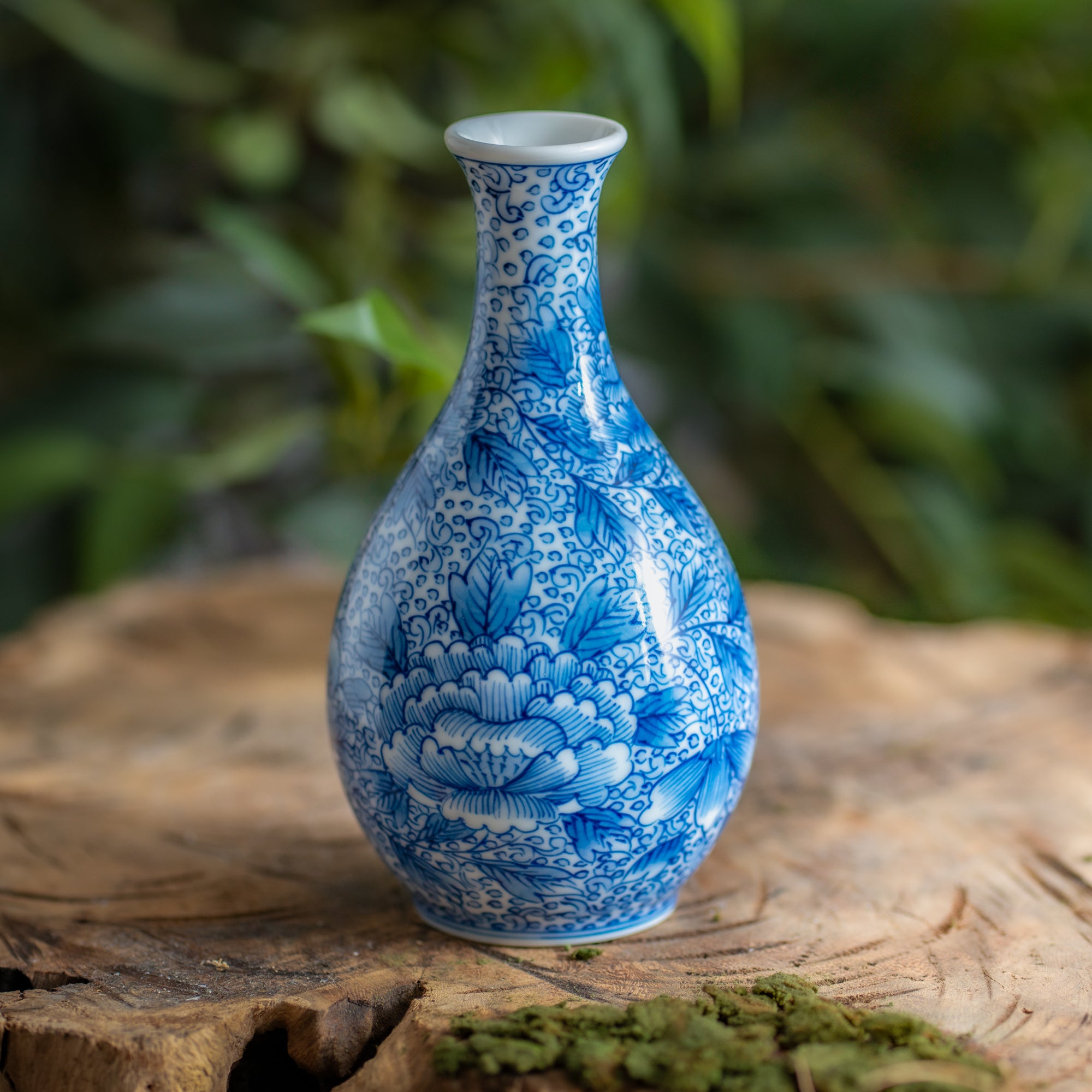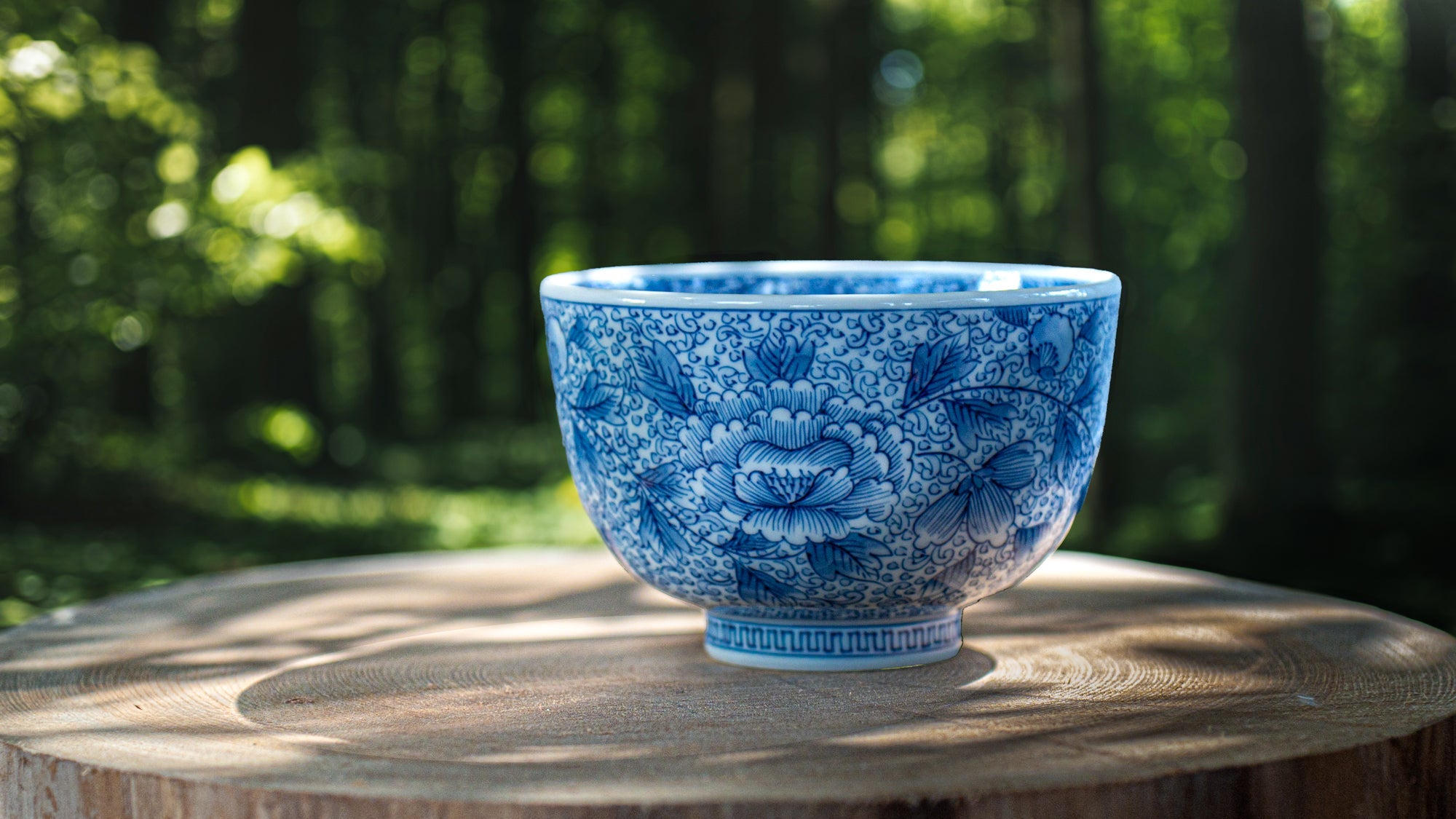
Lined with Story
Satomi Toshitaka
Satomi Toshitaka is the third-generation master of Kakusho Kiln. A descendant of kiln artisans who served the Hirado domain, he carries on the 350-year legacy of the kiln, specializing in the hand-painted sometsuke that defines Mikawachi ware.
Satomi remains faithful to the tradition of treating each piece as a unique work of art, while also embracing contemporary design sensibilities. In addition, he is engaged in the revival of refined tableware from the Meiji (1868–1912 CE) and Taisho (1912–1926 CE) eras, preserving and reinterpreting historical techniques for the present day.
Traces of the Hand
A brush glides confidently across the white porcelain surface, leaving behind subtle gradations of indigo—each stroke evoking the atmosphere of a finely rendered painting.
One of the defining features of Mikawachi ware lies in its softly luminous white porcelain and the delicate hand-painted decorations that grace its surface. The ultrafine brushwork, elegant and supple, imparts a quiet dignity to each piece.
Among these techniques, the method known as dami—a nuanced shading achieved with a single brushstroke—requires exceptional skill and sensitivity. Interestingly, the brush used is relatively broad, allowing wide areas to be covered in one motion, thus ensuring smooth gradation and eliminating uneven tones. Every element—the angle of the brush, the pressure applied, the speed of movement affects the expression of the indigo pigment. This technique, which allows the pigment to soak gently into the porcelain body, demands not only technical precision but also years of accumulated experience.
The sensibility held at the tip of the brush becomes the landscape of the vessel itself.
The refined brushwork and pale hues, layered with restraint, offer the viewer a sense of calm and a quiet, lingering resonance.
Lines That Breathe
For Satomi, what matters most is the pursuit of a "living line." An overly cautious line can appear stiff and lifeless.
To breathe vitality into each stroke, he emphasizes rhythm and a natural sense of movement—qualities that cannot be forced, but must emerge organically through repetition and intuition. Day after day, he returns to the brush. Through this quiet discipline, his lines grow increasingly fluid and assured. Over time, the hand remembers what the mind no longer needs to control.
“By continuing to draw, the movement of the line becomes more natural,” he reflects. “That steady accumulation is what matters most.” What emerges is a line free of hesitation—soft, deliberate, and alive with the artist’s presence.
Reviving the Essence
Satomi engages with the practice of faithfully reproducing forms and motifs from the Edo period (1603–1868 CE) not as mere imitation, but as a means of study and reflection. Through the act of copying, he encounters the remarkable skill, structure, and subtle sensibilities of artisans from centuries past. Each stroke becomes an opportunity to decode the aesthetic choices and quiet ingenuity embedded within historical works.
It is not the outward form alone that he seeks to replicate, but the spirit that animates it.
By attuning himself to the intentions behind the original, Satomi allows these echoes of the past to inform his own contemporary expression—gently, respectfully, and with enduring reverence.
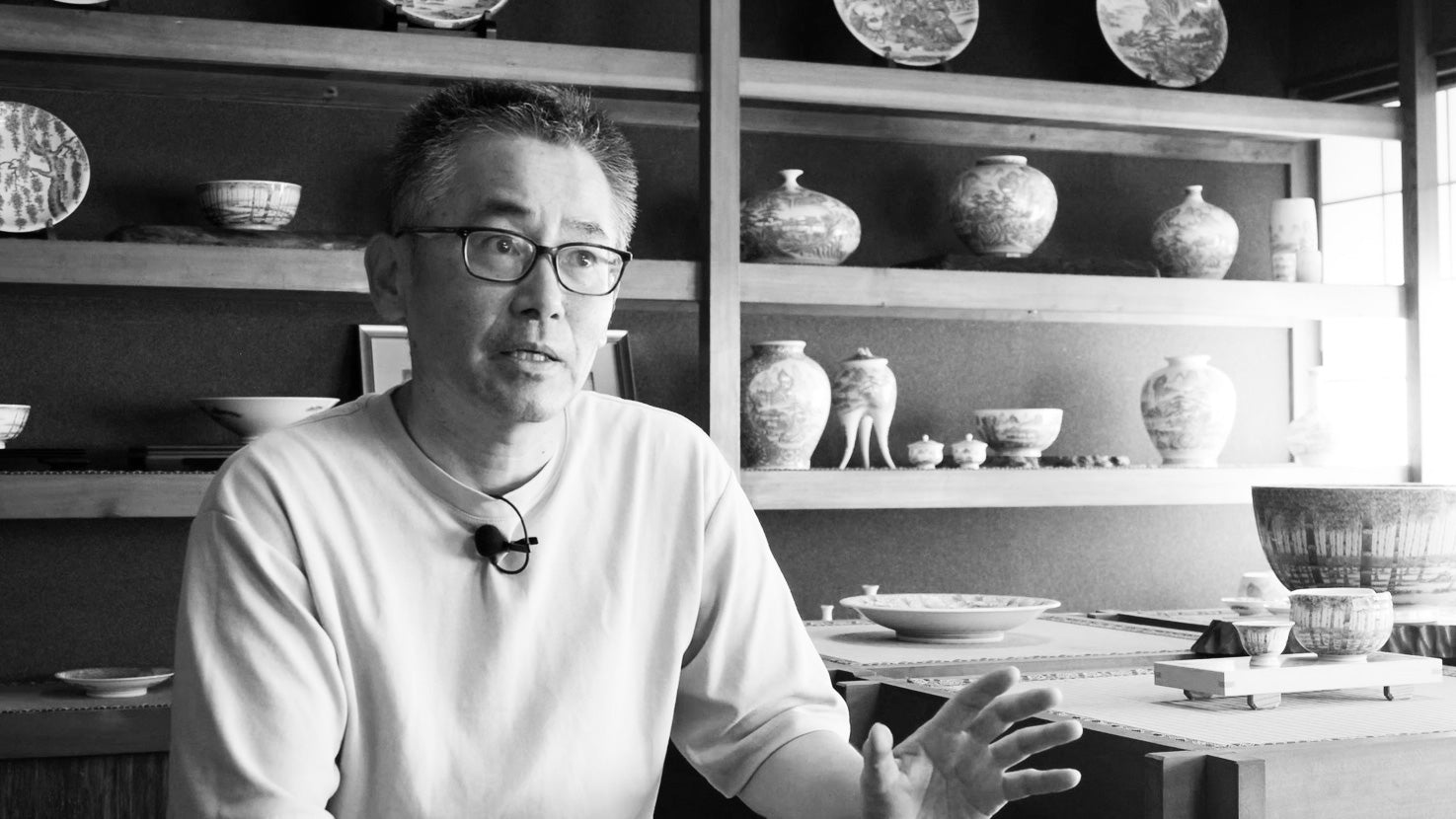
Biography
Satomi Toshitaka was born in Mikawachi, Sasebo City, Nagasaki Prefecture, into the distinguished lineage of Kakusho Kiln—a family of potters with roots as official kiln artisans to the Hirado domain. Raised amidst the legacy of Mikawachi ware, Satomi has lived in close dialogue with its 350-year tradition from an early age.
He studied ceramics at Kyoto University of Education and the Kyoto Prefectural Technical College for Ceramics, later apprenticing under master potter Shoami Takano of Kyo ware. In 1998, he began his full-time career at Kakusho Kiln, devoting himself to the creation of works grounded in the classical blue-and-white techniques of Mikawachi ware.
His accolades include the Yomiuri Shimbun Award and NCC Award at the 26th Mikawachi Ceramic Art Exhibition in 1999, the Grand Prize at the Nagasaki Ceramic Art Exhibition in 2002, and an Honorable Mention at the same exhibition in 2006.


